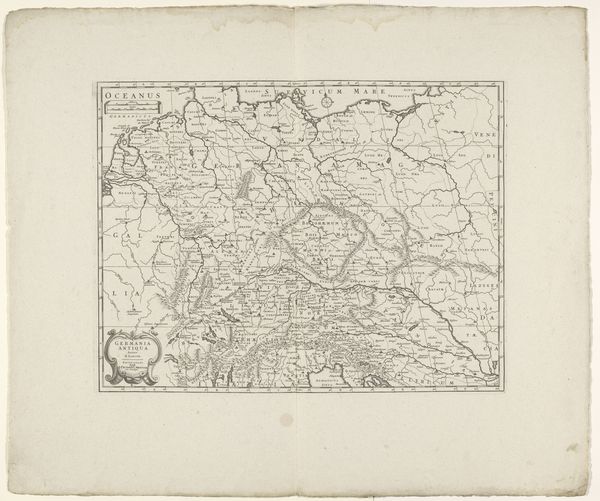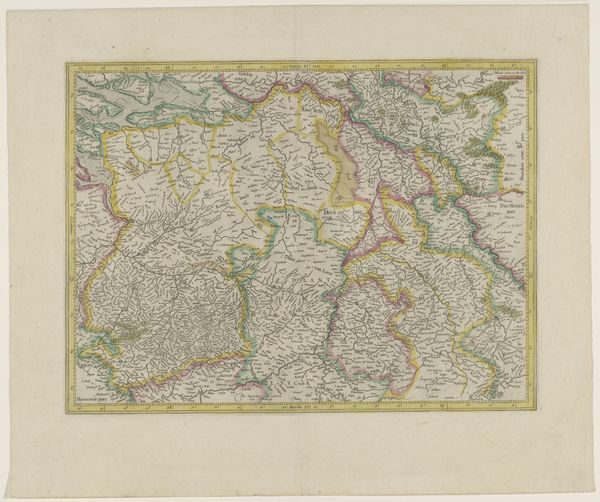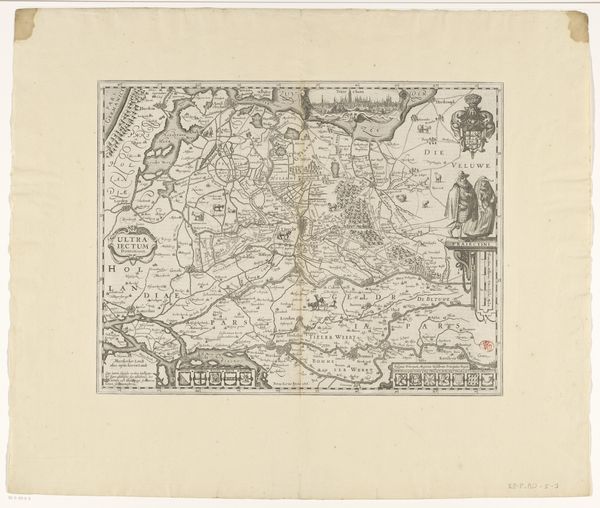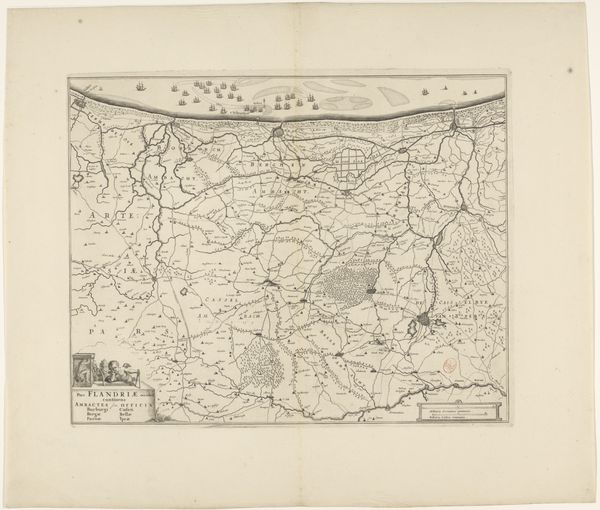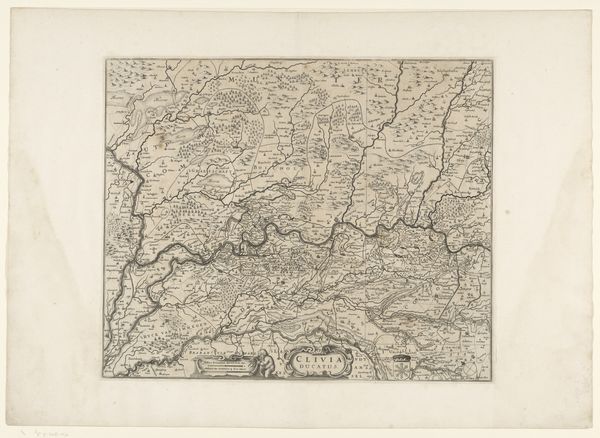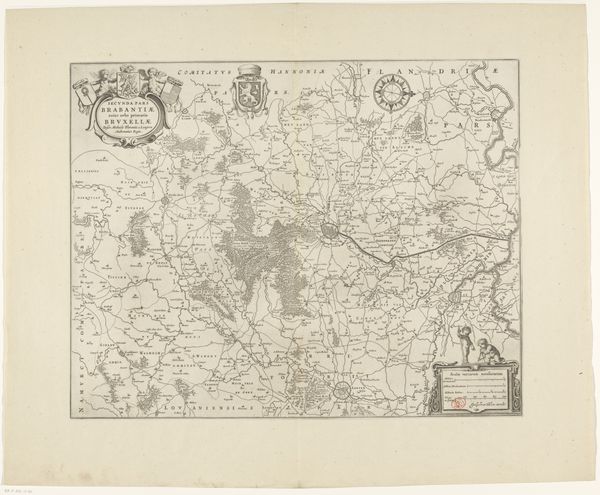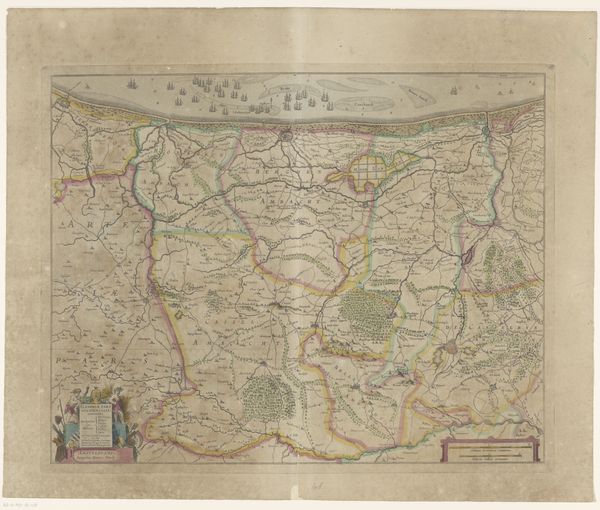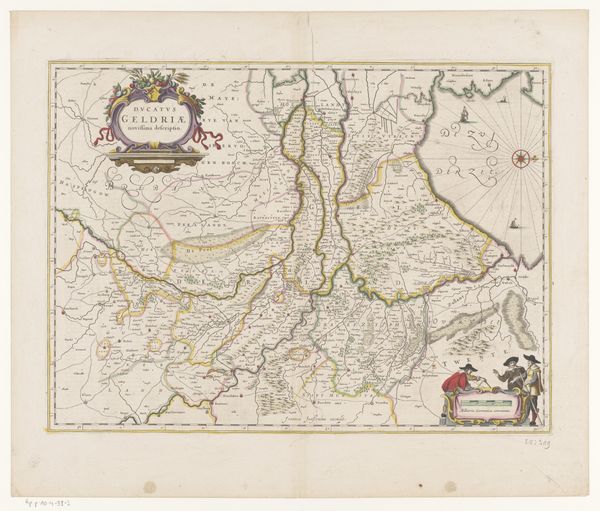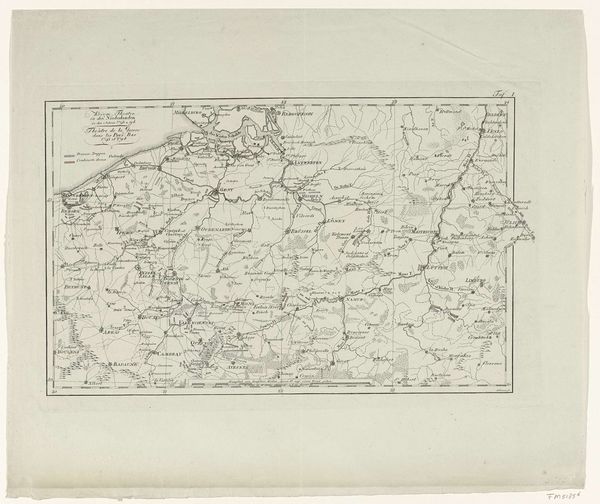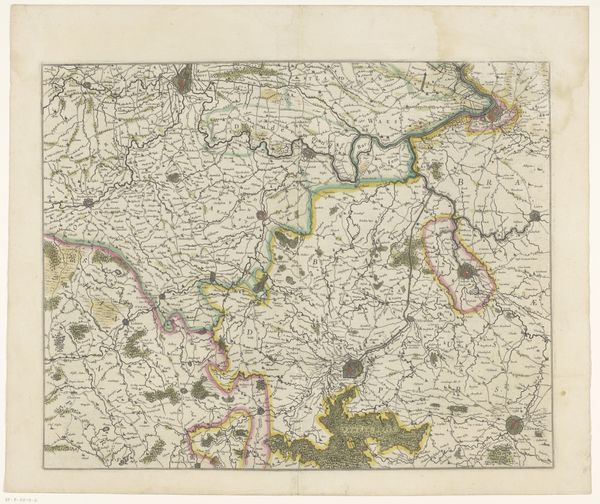
print, engraving
#
dutch-golden-age
#
ink paper printed
# print
#
landscape
#
watercolour illustration
#
engraving
Dimensions: height 180 mm, width 220 mm
Copyright: Rijks Museum: Open Domain
Editor: This is a 1791 print entitled "Kaart van de provincie Utrecht," seemingly a map created through engraving, possibly with watercolour detailing. What strikes me is how it's both a practical document and, in its own way, quite decorative. How would you interpret this work? Curator: As a historian, I immediately think about the context of map-making in the late 18th century. It wasn’t simply about geographical accuracy; it was about power, control, and the projection of authority. Think of who would have commissioned and used a map like this. Landowners? Military strategists? How would this "new" map of Utrecht shape political or social relationships within the province? Editor: That’s a good point! I hadn’t considered the political implications so explicitly. Do you think the style, the, what looks like watercolouring for example, contributes to that sense of authority or something else? Curator: Precisely! The meticulous detail, the decorative flourishes – these elements elevate the map from a mere functional tool to a symbol of sophistication and control. The relatively small scale of it also suggests it was used inside. Can you imagine a scenario of its potential public use at that scale? Who had access? Who would have interpreted it and acted upon that interpretation? Editor: Not really beyond what the landowner might want! Perhaps something akin to propaganda about order? Did mapmakers then think about art and style like that? Curator: Absolutely. Think about the relationship between cartography and other visual arts of the period. Landscape painting was incredibly popular. This map adopts conventions from that genre, presenting a carefully curated view of the land. Consider the role institutions played in defining what constituted “accurate” and “aesthetically pleasing” representations. It prompts interesting questions. Editor: Wow, I never considered maps as a tool of institutional control so explicitly! Seeing it as landscape painting of a sort makes perfect sense now. Curator: Precisely! This allows us to understand its cultural relevance during that era. Seeing it through a cultural and institutional lens makes it even more poignant to study to this day!
Comments
No comments
Be the first to comment and join the conversation on the ultimate creative platform.
